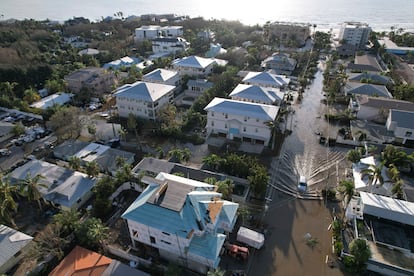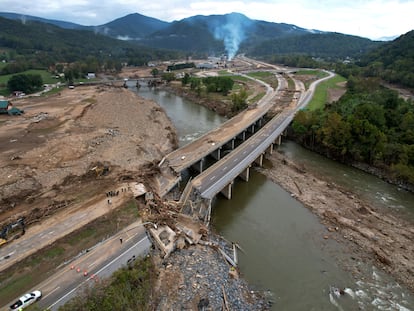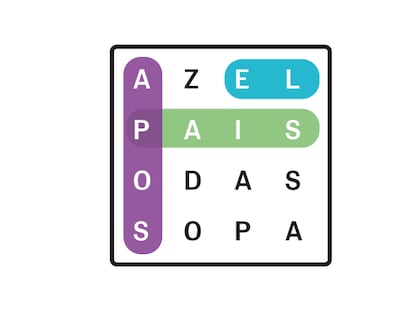2025 US hurricane season: Dates, forecasts and recommendations
With forecast models already pointing to storm development in the western Caribbean and unusually high sea surface temperatures for this time of year, the question is not if early storms will appear, but when

Each year, the Atlantic hurricane season officially begins on June 1 and ends on November 30. But recent trends — and current conditions — suggest that the 2025 season could start earlier than expected. With forecast models already pointing to storm development in the western Caribbean and unusually high sea surface temperatures for this time of year, the question is not if early storms will appear, but when.
In fact, early season activity is becoming more frequent. Seven of the last 10 hurricane seasons have had at least one named (i.e., considerably large) storm before June 1. This is a dramatic change from previous decades: between 2005 and 2014, only three years had storms before the season. This uptick in early formation prompted the National Hurricane Center (NHC) in 2021 to begin issuing regular tropical weather forecasts on May 15, two weeks before the traditional start.
In the Western Caribbean this May, sea surface temperatures are approaching normal levels for late June and July. These elevated temperatures could allow for early tropical development, especially if atmospheric conditions such as wind shear and humidity levels align. Warm water fuels tropical cyclones by providing heat and moisture that rise into the storm system, often causing storms to become stronger and more dangerous.
Why do storms start so early?
The short answer: climate change and warming oceans. The massive bodies of water absorb about 90% of the Earth’s excess heat due to global warming. As they warm, they provide more energy to developing tropical systems. A warmer atmosphere can also hold more moisture, which increases the amount of fuel a storm can use.
This pattern has been seen in recent seasons, such as 2012, 2016, and 2020 in which multiple storms formed before June. In 2020, for example, Tropical Storm Cristobal formed on June 1, but almost counted as another early storm.
It is important to note that an early start does not guarantee an intense season in general, but 2025 could be an exception, according to predictions.

What do the 2025 hurricane forecasts say?
Several major forecasting centers have released their early outlooks, and the consensus is clear: 2025 is likely to be an above-average hurricane season.
Colorado State University (CSU) forecasts 17 named storms, nine hurricanes and four major hurricanes, well above the historical average (14 named storms, seven hurricanes and three major hurricanes).
The Weather Company forecasts 19 named storms, nine of which will become hurricanes and four of which will reach major hurricane status.
Tropical Storm Risk (TSR) and North Carolina State University (NCSU) offer more conservative estimates, with a near-average seasonal forecast of about 14-15 named storms.
These predictions vary in part due to uncertainty around El Niño/La Niña conditions. The CSU notes that La Niña — a weather pattern known to reduce Atlantic wind shear and allow storms to strengthen — is expected to weaken to a neutral phase by summer. This, combined with extremely warm Atlantic waters, could boost the season.
Other factors influencing seasonal forecasts are vertical wind shear, mid-level humidity and atmospheric instability, which influence the potential for tropical disturbances to organize and strengthen.
The Pacific
Although much of the focus is on the Atlantic basin, the eastern Pacific — where the hurricane season begins two weeks earlier on May 15 — is also showing signs of preseason activity. However, it is less prone to early storms than the Atlantic, with only three named storms forming before May 15 in the past 20 years.
Interestingly, activity in the Atlantic and eastern Pacific often oscillates depending on broader ocean patterns such as El Niño and La Niña. When one is more active, the other tends to be calmer.
How to prepare for an early or active season?
Whether storms arrive early or not, preparation is key. Each year, hurricanes cause billions of dollars in damage and disrupt millions of lives. Now that forecasts are calling for a very active season, it’s time to prepare. Here are some recommendations:
- Have an emergency kit that includes water, non-perishable food, medications, flashlights, batteries and important documents.
- Know local evacuation routes and shelters in case authorities order people to leave their homes.
- At home, it is recommended to trim trees, secure loose objects outside and review insurance policies.
- Follow storms through the National Hurricane Center and the National Weather Service.
Sign up for our weekly newsletter to get more English-language news coverage from EL PAÍS USA Edition
Tu suscripción se está usando en otro dispositivo
¿Quieres añadir otro usuario a tu suscripción?
Si continúas leyendo en este dispositivo, no se podrá leer en el otro.
FlechaTu suscripción se está usando en otro dispositivo y solo puedes acceder a EL PAÍS desde un dispositivo a la vez.
Si quieres compartir tu cuenta, cambia tu suscripción a la modalidad Premium, así podrás añadir otro usuario. Cada uno accederá con su propia cuenta de email, lo que os permitirá personalizar vuestra experiencia en EL PAÍS.
¿Tienes una suscripción de empresa? Accede aquí para contratar más cuentas.
En el caso de no saber quién está usando tu cuenta, te recomendamos cambiar tu contraseña aquí.
Si decides continuar compartiendo tu cuenta, este mensaje se mostrará en tu dispositivo y en el de la otra persona que está usando tu cuenta de forma indefinida, afectando a tu experiencia de lectura. Puedes consultar aquí los términos y condiciones de la suscripción digital.
More information
Archived In
Últimas noticias
Welcome to the post-religion era: The idea of Christianity as the absolute truth has become obsolete
‘I thought you would like it’: The risky sexual practice popularized by TV shows and TikTok
The digitalization of tourism: ‘They promise experiences and gave us the worst possible one’
Mexican peso defies uncertainty with forecasts of a new period of stability in 2026
Most viewed
- Sinaloa Cartel war is taking its toll on Los Chapitos
- Oona Chaplin: ‘I told James Cameron that I was living in a treehouse and starting a permaculture project with a friend’
- Reinhard Genzel, Nobel laureate in physics: ‘One-minute videos will never give you the truth’
- Why the price of coffee has skyrocketed: from Brazilian plantations to specialty coffee houses
- Silver prices are going crazy: This is what’s fueling the rally











































